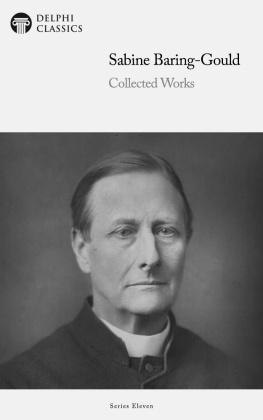Physical map - west
Physical map - east
CAMBRIDGE COUNTY GEOGRAPHIES
General Editor: F.H.H. Guillemard, M.A., M.D.
CORNWALL
CAMBRIDGE UNIVERSITY PRESS
London: FETTER LANE, E.C.
C.F. CLAY, Manager
Coat of Arms
Edinburgh: 100, PRINCES STREET
Berlin: A. ASHER AND CO.
Leipzig: F.A. BROCKHAUS
New York: G.P. PUTNAM'S SONS
Bombay and Calcutt: MACMILLAN AND CO., Ltd.
[All rights reserved]
Cambridge County Geographies
CORNWALL
by
S. BARING-GOULD
With Maps, Diagrams, and Illustrations
Cambridge:
at the University Press
1910
Cambridge:
PRINTED BY JOHN CLAY, M.A.
AT THE UNIVERSITY PRESS
CONTENTS
| PAGE |
| 1. | 1 |
| 2. | 3 |
| 3. | 5 |
| 4. | 8 |
| 5. | 13 |
| 6. | 19 |
| 7. | 26 |
| 8. | 31 |
| 9. | 41 |
| 10. | 51 |
| 11. | 57 |
| 12. | 61 |
| 13. | 67 |
| 14. | 72 |
| 15. | 79 |
| 16. | 80 |
| 17. | 88 |
| 18. | 94 |
| 19. | 97 |
| 20. | 106 |
| 21. | 114 |
| 22. | 125 |
| 23. | 128 |
| 24. | 132 |
| 25. | 135 |
| 26. | 140 |
| 27. | 148 |
| 28. | 160 |
ILLUSTRATIONS
| PAGE |
| 4 |
| 5 |
| 7 |
| 8 |
| 8 |
| 10 |
| 13 |
| 14 |
| 15 |
| 17 |
| 24 |
| 28 |
| 32 |
| 33 |
| 34 |
| 37 |
| 39 |
| 41 |
| 42 |
| 43 |
| 44 |
| 46 |
| 48 |
| 49 |
| 49 |
| 54 |
| 58 |
| 59 |
| 60 |
| 69 |
| 72 |
| 77 |
| 79 |
| 81 |
| 84 |
| 86 |
| 87 |
| 89 |
| 91 |
| 92 |
| 94 |
| 95 |
| 99 |
| 105 |
| 108 |
| 109 |
St Cleer: Monument to Doniert, son of
Caradoc, died a.d. 872. | 111 |
| 112 |
| 114 |
| 117 |
| 117 |
| 119 |
| 119 |
| 121 |
| 123 |
| 124 |
| 127 |
| 130 |
| 132 |
| 133 |
| 138 |
| 141 |
| 144 |
| 146 |
| 150 |
| 151 |
| 152 |
| 153 |
| 156 |
| 159 |
MAPS
| Front Endpaper |
| Front Endpaper |
| Back Endpaper |
| Back Endpaper |
| 63 |
The illustrations on pp. 3, 4, 9, 11, 12, 13, 15, 16, 24, 32, 36, 37, 39, 41, 42, 47, 48, 49, 50, 54, 59, 60, 70, 73, 79, 81, 84, 86, 89, 91, 93, 95, 99, 105, 112, 113, 114, 117, 118, 120, 121, 123, 127, 138, 150, 151, 152, 153, 156, 158 are from photographs supplied by Messrs F. Frith & Co.; those on pp. 8, 43, 45, 58, 77, 94, 108, 109, 134 by Messrs Preston, Penzance; those on pp. 141, 146 by Mr Emery Walker, and those on pp. 6, 29, 34, 87, 119, 124, 130, 132 by Messrs Hayman & Son, Launceston.
1. County and Shire. Meaning of the word.
If we take a map of England and contrast it with a map of the United States, perhaps one of the first things we shall notice is the dissimilarity of the arbitrary divisions of land of which the countries are composed. In America the rigidly straight boundaries and rectangular shape of the majority of the States strike the eye at once; in England our wonder is rather how the boundaries have come to be so tortuous and complicatedto such a degree, indeed, that until recently many counties had outlying islands, as it were, within their neighbours' territory. We may guess at once that the conditions under which the divisions arose cannot have been the same, and that while in America these formal square blocks of land, like vast allotment gardens, were probably the creation of a central authority, and portioned off much about the same time; the divisions we find in England own no such simple origin. Our guess would not have been wrong, for such, in fact, is more or less the case. The formation of the English counties in many instances was (and isfor they have altered up to to-day) an affair of slow growth. King Alfred is credited with having made them, but inaccurately, for some existed before his time, others not till long after his death, and their origin wasas their names tell usof very diverse nature.
Let us turn once more to our map of England. Collectively, we call all our divisions counties, but not every one of them is accurately thus described. Cornwall, as we shall see, is not. Some have names complete in themselves, such as Kent and Sussex, and we find these to be old English kingdoms with but little alteration either in their boundaries or their names. To others the terminal shire is appended, which tells us that they were shorn from a larger domainshares of Mercia or Northumbria or some other of the great English kingdoms. The term county is of Norman introduction,the domain of a Comte or Count.
Although we use the term county for Cornwall, we should not in accuracy do so, as just stated, for it is a Duchy, and has been such since March 17, 1337, when Edward of Woodstock, eldest son of King Edward III, was created Duke of Cornwall. Nor can it be called a shire, for Cornwall was a territory to itself. In 835 Athelstan drove the Britons across the Tamar and made that river the boundary between the Briton and the West Saxon of Devon.
The ancient name of Cornwall and Devon was Totnes, i.e. Dod-ynys, "the projecting island," and the Celtic population was that of the Dumnonii. It was not till the tenth century that the name Cornweales appears, signifying the Welsh of the Horn of Britain. The Latin form of Cornwall is Cornubia. The ancient British settlers in the present department of Finistre called that portion of Gaul Cornouaille.
2. General Characteristics.
On many accounts Cornwall may be regarded as one of the most interesting counties of England, whether we regard it for its coast scenery, its products, or its antiquities. It has lain so much out of the main current of the life of England that it was hardly mixed up with the politics of the nation till the time of the Civil War.
Its situation, projecting as it does into the sea, by which it is washed on all sides but one, has naturally caused the natives to take to the water, and has made Cornwall to be the mother of a hardy breed of fishermen and sailors. But the county being also rich in mineral wealth has from an early age caused a large portion of the manhood of the land to seek their livelihood in mines; and the peculiar conditions of Cornwall have thus determined the professions of a large proportion of its males to be either on the water or under ground.




